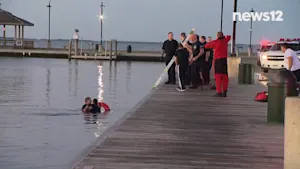More Stories
One year after New York City's deadliest fire in decades, the firefighters who responded to the Twin Parks North West apartment complex on Jan. 9, 2022 are sharing their stories.
"It was a fire that you probably respond to once in a career," said Jeffrey Facinelli, a battalion chief at the FDNY's 18th Battalion.
"We were dealing with so many worst case scenarios,” said FDNY Capt. John Hunt. "It looked like a battlefield."
Hunt was among the first to arrive at the Bronx building, alongside the crews of Engine 48 and Ladder 56. They encountered smoke spilling out of windows, before heading inside to fight the fire.
"It’s almost like a tornado that you’re going into," said Hunt. "Very acrid, thick smoke that’s stuck right to your face inside, right to the thermal imaging camera to the point where I couldn’t see."
The group was forced to feel their way down the third-floor hallway, ultimately finding an open door they thought would lead to the source.
"We went in looking for the fire, and we start finding what we call 10-45 after 10-45, victims," said Hunt. "We ended up finding a total of six victims."
That apartment was across the hall from the duplex where the fire started. It was sparked by a space heater, fueled by mattresses, and made worse because both doors didn’t close, investigators said.
"Very rare that you find two doors open on the fire floor, I mean I’m going say almost never," said Hunt, who's been with the FDNY for 27 years.
The FDNY captain and his crew hoisted five of the six victims out a window and down a ladder. On the ground, Facinelli, who was covering a shift for a colleague, became acting deputy chief of the operation.
"Normally, when you go to a fire, you report in with your tools, equipment, hose, and everything, we didn’t need any of that, we needed staffing, people to do CPR, to carry people, to pull people downstairs," said Facinelli. "So it really transitioned from a fire operation to a mass casualty incident at that point."
"Even when they first get the phone call about how many critically injured patients there were, I had to ask them to repeat themselves a couple of times. You just don’t hear that," said FDNY Commissioner Laura Kavanagh.
Firefighters pulled 64 people with serious injuries from the building, with half of them clinging to life.
"What it kind of brought me back to is my sense of Prospect Avenue of 2017, ironically enough, that was a fifth alarm, this was a fifth alarm. And as the incident commander for both, I never saw a flame of fire, all I saw was smoke the entire time from the front of the building," said Facinelli.
Smoke claimed the lives of 13 people during a fire at 2363 Prospect Ave. in the Bronx four years prior. About a mile away at Twin Parks in 2022, 17 people died due to smoke inhalation. In both cases, smoke spread through the buildings because of an open door.
In 2018, the New York City Council passed a bill that required self-closing doors in apartment buildings with three or more units. At Twin Parks, multiple doors malfunctioned.
"I think the most notable change is that the mayor had an executive order that really helped us do a lot more partnering with our fellow agencies, especially {the Department of Housing Preservation and Development} and that really helps us understand where there are the most violations," said Kavanagh, who assumed the role of FDNY commissioner within weeks of the Twin Parks fire. "For them to know that a building may have a particularly high number of violations is something that could help save lives."
Fire safety outreach and education changed too, according to Kavanagh, in the year since the deadly Twin Parks fire.
"Especially in this fire, in this borough there are a lot of immigrant communities," said Kavanagh. "So we think a lot about how do we work with clergy, how do we work with community partners, how do we make sure that what we know is actually getting to the people who need to know it... then we also work with {the Department of Education} to get more of this into schools."
Fire officials say knowing your home and having a plan should a fire happen can be lifesaving.
"This is a building that’s a great example where it’s a fireproof building you could shelter in place if you were not in the fire apartment," said Kavanagh.
"One thing we don’t really take into account, is what could happen," said Hunt. "Unfortunately, it’s usually too late when people think about what could happen."
More from News 12
2:34
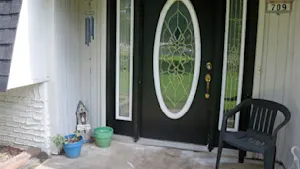
Guide: Safety tips to help prevent home burglaries
2:19
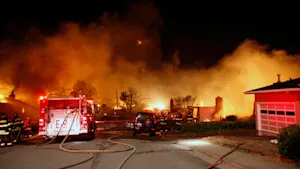
Guide: Safety measures to help prevent fires and how to escape one
2:40
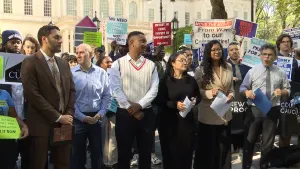
Mayor's budget cuts: A controversial solution amidst immigration crisis
2:07
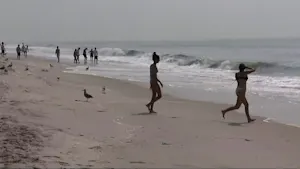
Tips on how to avoid confrontation with sharks while swimming in the ocean
2:33
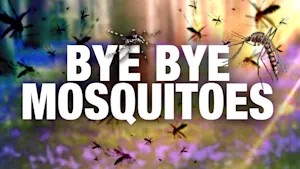
5 tips to prevent mosquito bites and getting sick from viruses
2:39
